


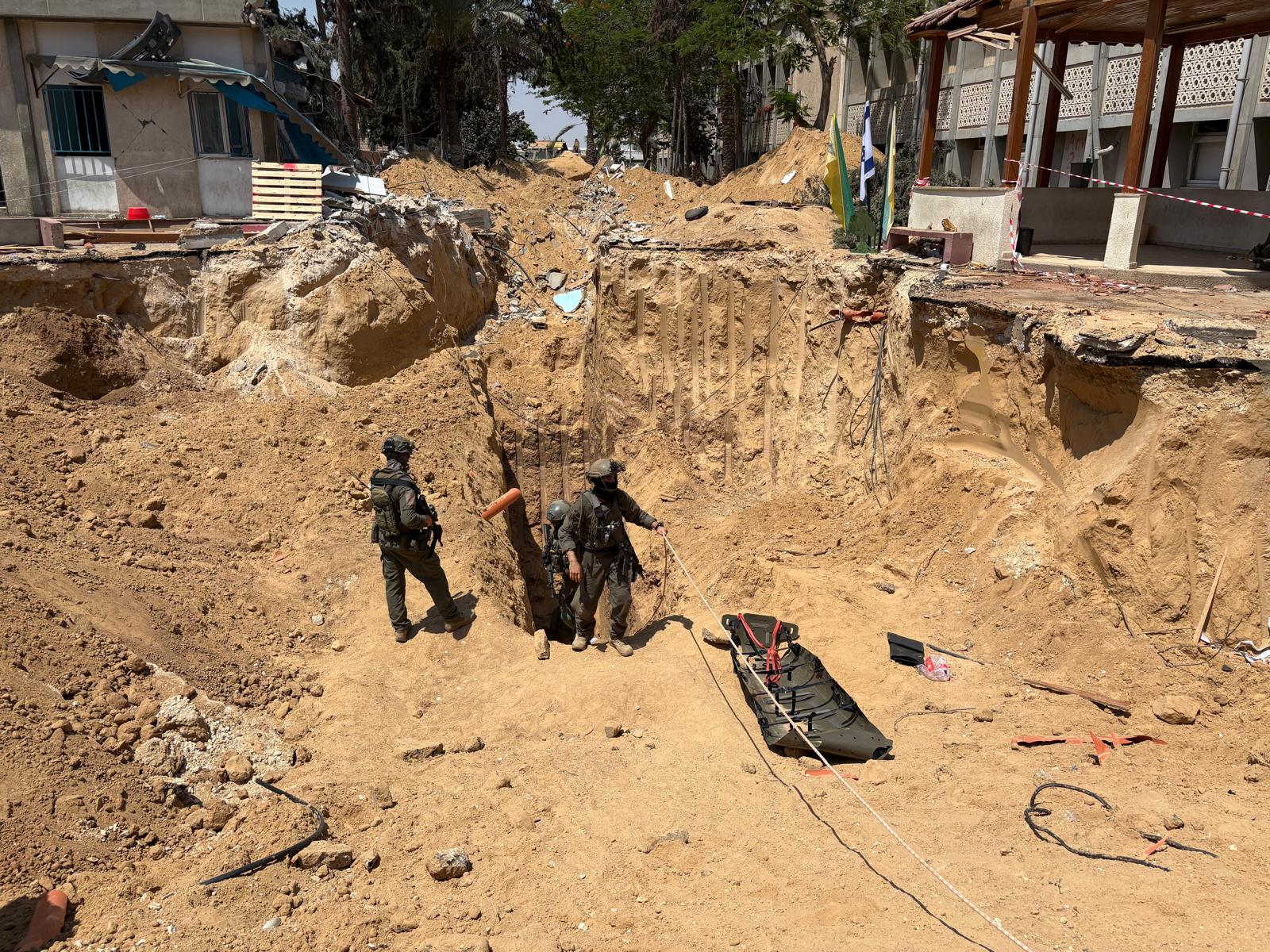
KHAN YOUNIS, Gaza Strip — The army and Shin Bet confirmed on Sunday that a body extracted by Israeli forces in a tunnel in southern Gaza over the weekend is that of Hamas leader Mohammed Sinwar.
The announcement came hours after The Times of Israel toured the tunnel in which the terror commander was killed, on a media tour organized by the Israel Defense Forces.
Sinwar, brother of October 7 mastermind Yahya Sinwar, was killed in a May 13 airstrike as he hid in a tunnel under the European Hospital in Khan Younis, according to the army.
Four other Hamas operatives were killed along with Muhammad Sinwar, including Hamas’s Rafah Brigade commander Muhammad Shabana, and South Khan Younis Battalion commander Mahdi Quara, said the IDF.
Two other bodies believed to belong to them are still undergoing identification by the military.
The 8-meter-deep tunnel where they were hiding was part of a massive subterranean network that connected Hamas’s Rafah and Khan Younis brigades. Israel’s strikes, which sent massive plumes of smoke and debris into the air when they took place, targeted two sections of the tunnel in order to trap the commanders in between, according to the army.
The airstrikes hit areas of the tunnel outside of the hospital complex according to the IDF, and the hospital continued to operate after the operation.

The Hamas operatives suffocated to death in the rubble, said the army.
Israel had reported that Sinwar was likely killed in the attack, but was only able to confirm his death once troops moved into the area and recovered the bodies from the tunnels.
The hospital is in a part of Khan Younis that troops had not entered until last week, when soldiers from the Golani Brigade reconnaissance company, the IAF’s elite Shaldag unit, and the Yahalom combat engineering unit took over the medical complex. Staff and patients fled the area before their arrival.
“We understood that those bodies were very important from the first footage when we went in,” said a company commander in the Golani Brigade’s elite reconnaissance company, who can only be identified by his rank of Major and the initial N. “It was very serious people in the organization.”
“The terrorists we took out are important,” he continued, “but not as much as the weapons and intelligence that we took out from here.”
“We found a military base under a hospital, period. There’s no other way to say it,” he said.
The intelligence they found, said N., had a direct impact on ongoing combat operations two kilometers away.
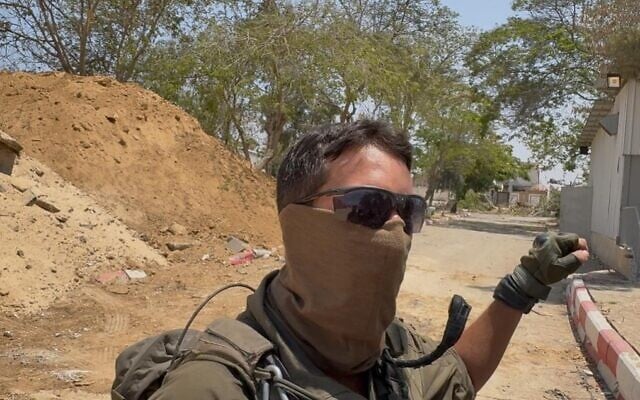
“We also found intelligence on hostages,” he continued. “That’s the biggest. That’s why we’re all here.”
Unlike in most other parts of Gaza, many structures still stand in the Khan Younis neighborhoods around the European Hospital, undoubtedly because they were spared from major ground combat until last month.
Starting on May 20, the 36th Division, made up of combat troops from the Golani, Kfir, and 188th Armored brigades, attacked northward from the Morag Corridor, an IDF controlled belt between Khan Younis and Rafah in southern Gaza. The maneuver easily overwhelmed Hamas defenses that had anticipated an attack from the east.
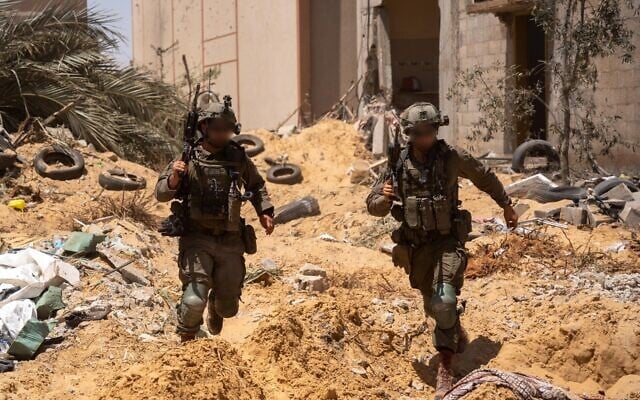
The move came days after Israel launched Operation Gideon’s Chariots, a broad ground operation aimed at taking control of most of the Strip while displacing most of Gaza’s civilians.
The purpose of the ongoing ground operation “is bringing back the hostages and bringing down Hamas’s rule,” IDF spokesman Brig. Gen. Effie Defrin said Sunday.
He spoke as the IDF brought Israeli military reporters — followed by members of the international press — to the hospital, which was built with European Union funds, to show them the tunnel in which Sinwar was killed.
“This was one of the command and control centers that Hamas used to carry out the October 7 attacks on the Gaza border communities, the slaughter and the murder,” said Defrin above an entrance to the tunnel, meters from the European Hospital’s emergency ward.
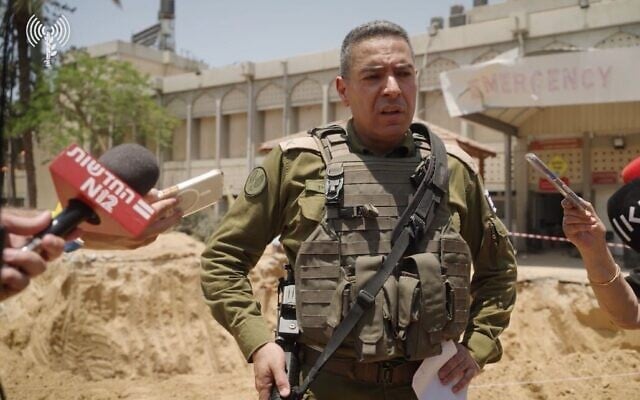
“Hamas uses hospitals in a cynical fashion,” he continued, adding that “you can see where European funds went.”
The hospital grounds showed signs of significant damage from the fighting, which included combat between Israeli forces and small groups of terrorists in and around the complex.
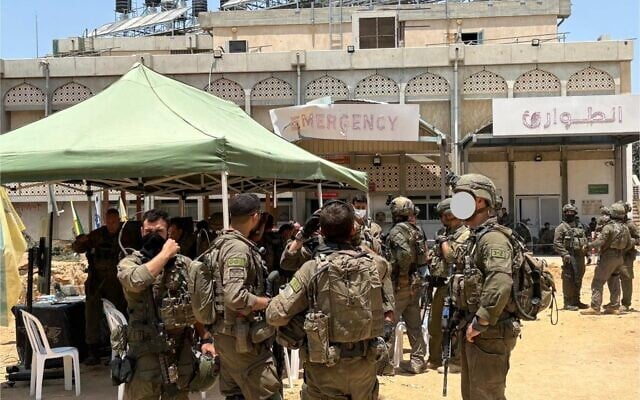
Windows were blown out, some roofs were damaged, and the streets were littered with concrete, rebar, and glass.
Golani forces had waged a firefight on the hospital grounds with 7 terrorists who were trying to fire rockets at Israeli border communities, said a company commander.
But the buildings were largely intact, and the IDF believes they can return to use once the campaign ends.
You can see where European funds went.
Nearby, Israeli excavators had carved out a steep descent through loose sand into the tunnel. A plastic stretcher the army used to pull the bodies out lay near the now-exposed passage.
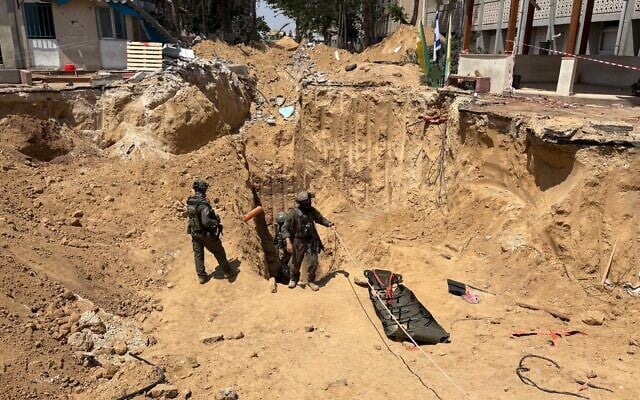
A Golani Reconnaissance officer led the way into the narrow tunnel, a red light on his helmet casting a ghostly gleam on the concrete supports.
The sticky, pungent smell of death was overpowering. The bodies of the five terrorists had remained in the tunnel for three weeks after the May airstrike.
The room where they met their end still had mattresses on the floor, covered with clothes and bottles.
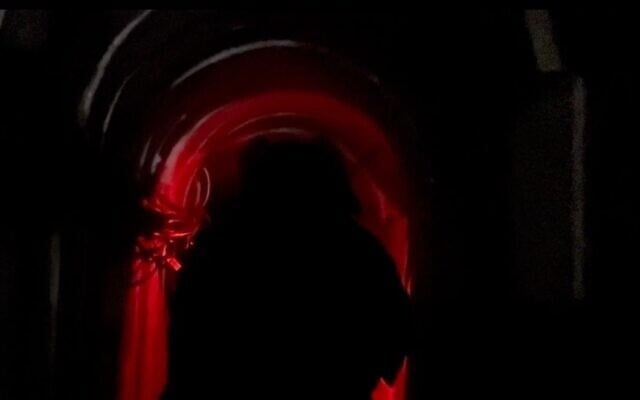
Israeli hostages were likely held in the tunnel as well at some point, said Maj. N., a company commander in the Golani Brigade’s elite reconnaissance company.
Troops found two IDF-issued guns, explosives, maps, operational plans, and ID cards inside the underground room where the terrorists died.
The Times of Israel’s entrance into the tunnel under the European Hospital came as four soldiers killed in Friday’s building explosion in the southern Gaza Strip were being buried throughout the country.
“We are destroying booby-trapped homes,” explained Defrin. “Every other home has tunnels or weapons.”
Israeli troops don’t go into homes if it isn’t necessary, he insisted.
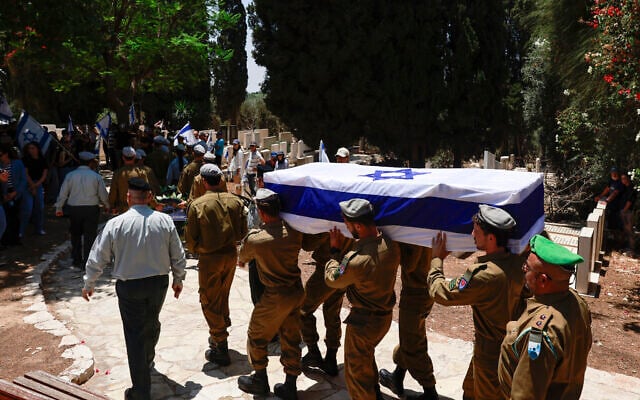
According to the Golani major, there is a set procedure that must be followed before any soldier enters a building, including approval from a battalion commander
“And when we do go into the house, because it has enemy infrastructure, it has terrorists, there is intelligence,” he said.
Hamas fighters in Khan Younis are carrying out sniping attacks, booby-trapping buildings, and trying to ambush IDF forces before fleeing, said officers at the hospital.
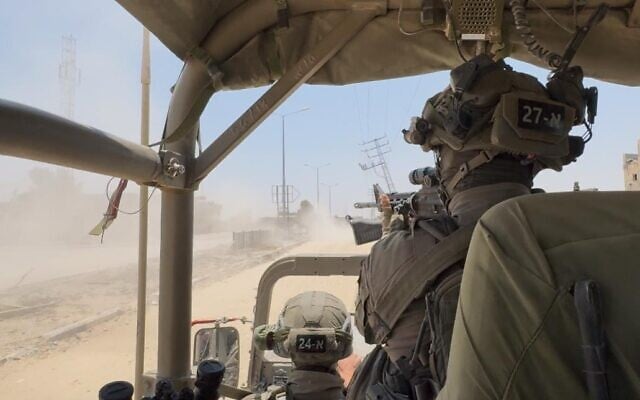
Force protection was being given precedence over speed in the current operation, Defrin noted.
“Therefore, its not a quick action, but a secure one,” he said. “It’s a long war. It’s complex. You see the challenges.”
He spoke as Israel marked 611 days since Hamas’s invasion of southern Israel on October 7, 2023, which sparked the war.
That assault killed some 1,200 people and saw another 251 taken hostage. Terror groups in Gaza continue to hold 55 hostages, including the bodies of at least 33 confirmed dead by the IDF, and 20 who are believed to be alive. There are grave concerns for the well-being of two others, Israeli officials have said.
“We will act to shorten the war, since we understand the implications of such a long war,” Defrin promised. “But we have missions to accomplish and we will accomplish them.”
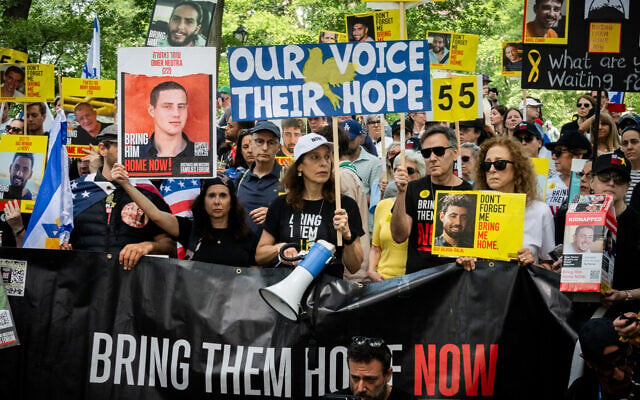
With the four deaths, Israel’s toll in the ground offensive against Hamas in Gaza and in military operations along the border with the Strip stands at 429.
“It’s long, yes,” said N. “It wears you down. But it’s important.”
